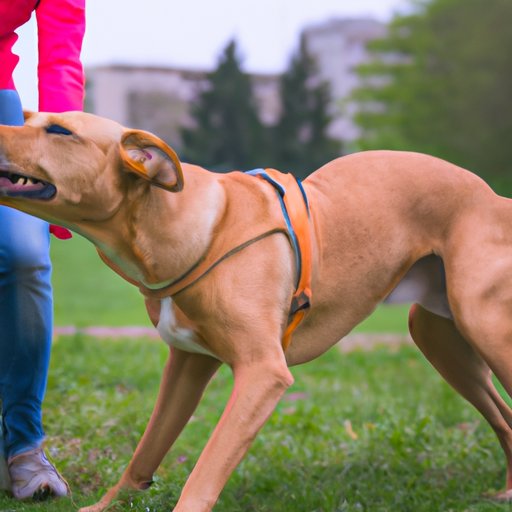Introduction
Dogs are typically known for their loving and loyal nature, but sometimes they can display aggressive behavior. It is important to recognize the signs of aggression in dogs and take steps to address the issue. This article will explore the definition of aggression in dogs, provide an overview of possible solutions, and discuss various tips and strategies on how to stop your dog from being aggressive.
Establish a Routine
Having a consistent schedule for your dog is beneficial in reducing aggression. Dogs prefer structure and predictability, so having a routine in place can help them feel secure and reduce stress levels. Here are some tips for creating a routine:
- Feed your dog at the same time each day.
- Take your dog for walks at the same time each day.
- Provide regular potty breaks.
- Make sure your dog has plenty of toys and activities.
- Create a designated sleeping area for your dog.
Socialize Your Dog
Socialization is an important part of helping your dog become more comfortable with people and other animals. The more your dog is exposed to new environments, people, and situations, the less likely they are to act out aggressively. Here are some tips for introducing your dog to new people and animals:
- Start by introducing your dog to one person or animal at a time.
- Allow your dog to approach the person or animal on their own terms.
- Encourage positive interactions with treats and praise.
- Avoid forcing your dog into uncomfortable situations.
- Let your dog take breaks if needed.
Use Positive Reinforcement
Positive reinforcement is a great way to reward good behavior and discourage bad behavior. When your dog displays good behavior, give them treats or verbal praise. This will reinforce the behavior and make it more likely to occur again in the future. Here are some tips for rewarding good behavior:
- Be consistent with rewards.
- Use treats that your dog enjoys.
- Provide rewards immediately after the desired behavior.
- Praise your dog verbally throughout the day.
- Use positive body language, such as petting.
Exercise Regularly
Regular exercise is essential for keeping your dog both physically and mentally healthy. Exercise helps burn off excess energy and can also help reduce stress levels. Here are some tips for providing regular exercise:
- Take your dog for walks every day.
- Play fetch or other interactive games.
- Engage in agility training exercises.
- Visit a local dog park or beach.
- Provide mental stimulation with puzzles and toys.
Seek Professional Help
If you have tried all the tips above and your dog’s behavior is still a cause for concern, it may be time to consult a professional. A qualified trainer or veterinarian can help assess the situation and provide advice on how to best address the issue. Here are some tips for when to consult a professional:
- Your dog’s aggression is severe or dangerous.
- You are unable to manage the aggression on your own.
- You need help understanding why your dog is behaving aggressively.
- You need help developing a plan for addressing the aggression.
- You would like to learn more about preventative measures.
Conclusion
Aggression in dogs can be intimidating and difficult to manage, but with the right strategies and techniques, it is possible to reduce or even eliminate aggressive behaviors. Establishing a consistent routine, socializing your dog, using positive reinforcement, providing regular exercise, and seeking professional help are all effective ways to address aggression in dogs. With patience and dedication, you can help your furry friend become the loving and loyal companion they were meant to be.
(Note: Is this article not meeting your expectations? Do you have knowledge or insights to share? Unlock new opportunities and expand your reach by joining our authors team. Click Registration to join us and share your expertise with our readers.)
